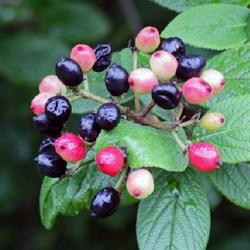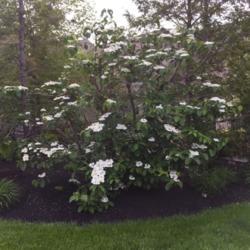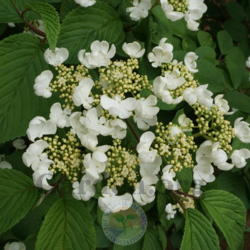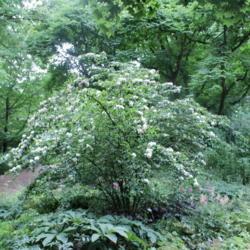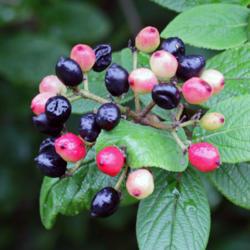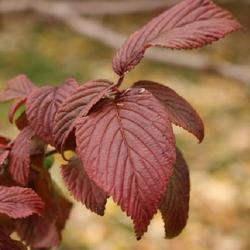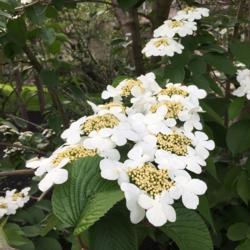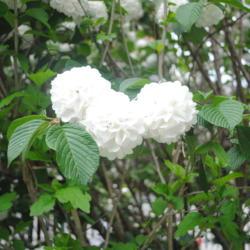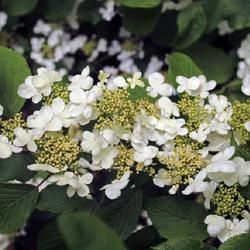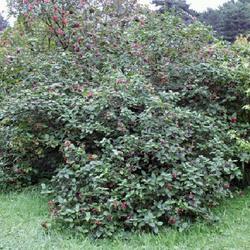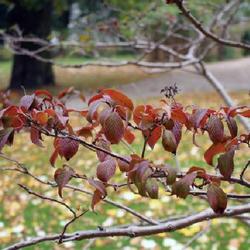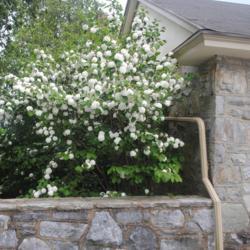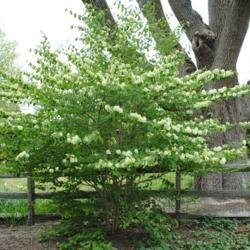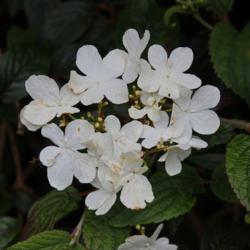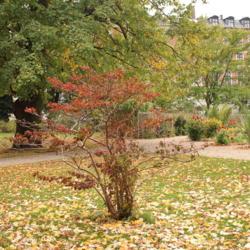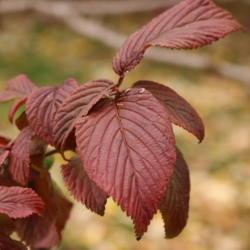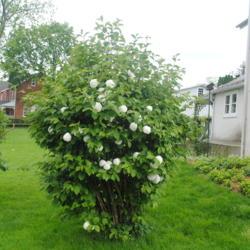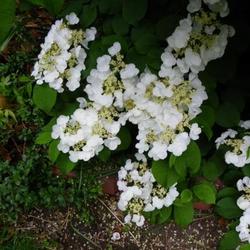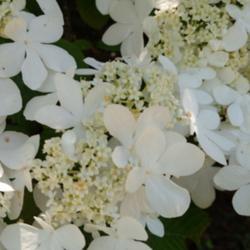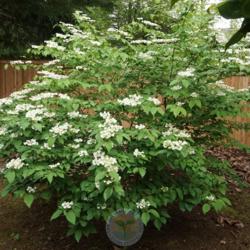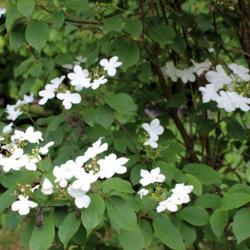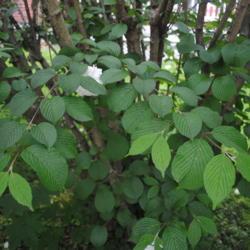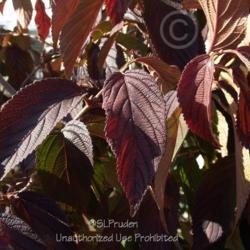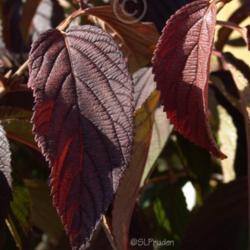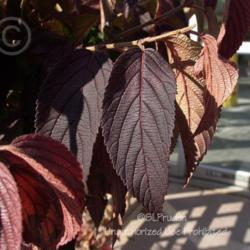Posted by
ILPARW (southeast Pennsylvania - Zone 6b) on May 5, 2019 5:15 PM concerning plant:
Back when I was studying ornamental horticulture in the 1970's, a number of landscape architects and designers, along with Dr. Michael Dirr who was teaching woody plants at the University of Illinois, were totally passionate about this shrub from East Asia. It is a beautiful plant. The main factor is that it needs lots of room to spread. For it to really look good it needs about 15 feet of space around it. It gets its name of Doublefile because the flower clusters are borne in dual rows on either side of the twigs, in a plane above the plane. Actually, this is what should be Viburnum plicatum because it is the normal, fertile, natural species of the plant that bears lacecap kinds of flower clusters with both the tiny fertile florets inside and the outer large, showy infertile florets. The Japanese Snowball Viburnum bears mutated, round clusters of all infertile florets, as what happens so much with hydrangea cultivars. What I don't like about this plant is that it is stinky to work around, especially if stems are cut or leaves bruised. It is the same stinky odor that the Siebold Viburnum has so horribly, but not as strong. Unfortunately, it has also escaped cultivation to be a slightly invasive plant in woodland edges in the eastern US. It does not tolerate strong drought well. In USDA Zone 5 it is best to keep it sheltered as a bad winter can damage it or even kill it. I have not really seen Doublefile Viburnums in many average yards, but it is somewhat common in arboretums, estates, campuses, office parks, and professional landscapes in the Mid-Atlantic Region. I know it has been raised and planted in the Chicago, Illinois region, but I can't think any specimens in my mind there in Zone 5a. I remember some in central Illinois at the University of Illinois in Zone 5b doing fine. I have sometimes seen some problem with stem cankers on older plants.
Posted by
ILPARW (southeast Pennsylvania - Zone 6b) on May 5, 2019 4:32 PM concerning plant:
This Japanese Snowball shrub is an old-fashioned plant first brought over from Japan in the late 1800's to the USA. I first saw a picture of it in the Countryside Book called Home Landscaping in the early 1970's that we used in landscape design class along with a textbook of landscape architecture. I've seen a few in the Chicago, Illinois region in average yards and a few in the Philadelphia, Pennsylvania region in average yards also. Actually in early May 2019 I rode on my bicycle in the mostly old town (borough) where I live and found 4 different specimens of this shrub planted around in yards with the houses from the 1890's through the 1920's. What is strange is that this sterile-flowered mutation of the species was first discovered by the West rather than the normal, fertile species that is the Doublefile Viburnum (V. plicatum tomentosum), so it got the regular scientific name. The Japanese Snowball Viburnum bears the 2 to 3 inch diameter flowers usually about 2 or 3 weeks later than the Doublefile, and the flowers begin with a greenish tinge before becoming totally white. The flowers don't have any real odor and do not bear any fruit that would be a black drupe as is borne with the real species. The leaves are dark, with deep veins, simple, rounded, and of thick and rough texture. It is still offered by cheap mail order nursery catalogues. It can be bothered by aphids. The European Snowball Viburnum (V. opulus 'Roseum'), that is often confused with this Japanese shrub, is also an old-fashioned plant has larger flower clusters and three-lobed leaves that are of thin texture and don't have deep veins.

